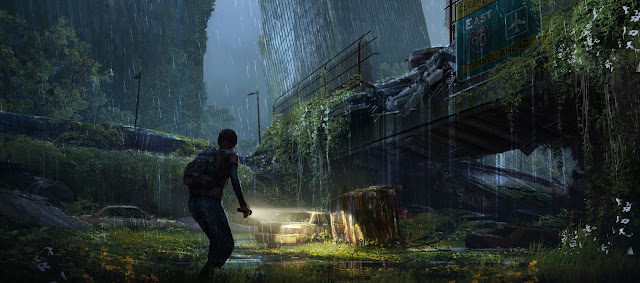The Last of Us in D&D and other TTRPGs (or better, the contrary)
 |
| ©Naughty Dog |
The Last of Us Part II happened. I'm still playing it and so far it's good. Obviously I played the first again (and again and again, three runs while waiting for this new chapter, trying to obtain those hard-ass trophies. And mostly failing at it) and I started to wonder: which TTRPG should one use to mimic TLoU? Quick answer: not D&D.
I guess that most of survival-horror TTRPGs should work fine with a little reskin (or even generic systems like GURPS). Unfortunately, the only two that I know quite well to try and adapt to are only available in Italy (Sine Requie and L'Ultima Bomba), so talking about them in this post is not very much useful. But I know of other games (Apocalypse World and Fallout PnP for example) that may work.
The core aspects that you need are high chances of PCs death, rules for firing guns, a bit of stealth mechanics and an array of humanoid monsters to reskin. Useful but not required are rules that cover shooting at certain body parts to have different results (or consequences); aspects of survival like eating, sickness and realistic wounds recovery; PC morale's. Less useful but of great taste is a broader selection of somewhat realistic weapons, ranged, melee or explosives.
* * *
So it is quite obvious that a game like your average D&D is not good for such a task, being more abstract on the concept of realism and generally more heroic than gritty; there is also a good article about this topic on DnD Beyond. However, this does not mean you can't try TLoU in D&D with some modifications (almost none of which is hombrew). Let's break down the tools that we have.
To achieve high mortality rates, play with level 1 PC and never level up. Use only classes that do not have any magic at level 1 (Barbarian, Fighter, Monk, Ranger and Rogue); the one and only exception could be the Artificer, but I personally don't know that class well enough. You are restricted to play as Humans (either base or variant, just use non-magical feats), so no darkvision or funky abilities for you. Overwrite languages like Common, Elven and so on, and implement real world ones. To build your ability scores, use the Point Buy system or the 4d6-drop-the-lowest method. In this particular instance, the latter is preferred: your games won't last enough to make it annoying anyway, and either extremes can help to roleplay in such a dangerous environment: the pc with low constitution but high intelligence can be the weak but invaluable strategist to protect at all costs, while the beefy high strength survivor with low charisma can be the toughened veteran who has almost lost its humanity. Backgrounds work fine, just remember to make choose them in accordance to your character's age (a younger pc is hardly a Soldier and more probably an Urchin, for example). If you still like the idea of improving your characters as they survive, think about giving feats or charms instead of levels (as already said, you will not level up), or better equipment.
Give proficiency with modern firearms and explosives (see the DMG at page 267) only to those who are proficient with martial weapons. Remember, this does not mean that non-proficient characters can't use them! Reskin longswords into machetes, tridents as forks, breastplates as bulletproof vests and the like.
Then look at some of the other optional rules in the DMG: Gritty Realism (page 267), Healer's Kit Dependency (page 266), Fear and Horror (page 266), the Action Options (page 271), Diseases (page 256), Madness (page 258) and Injuries (page 272). All of them or pick what you like among these, but I suggest at least Injuries and Action Options. Treat Arcana checks as a technology check.
All of this optional rules will make the base game heavier than normal, while the single characters' rules will be definitely lighter. Compiling them on few pages and giving them to the player's is a good idea. Expect extreme clunkiness at the beginning. You should also rethink your encounter building method, because much will change based upon the party's strategy and the resources that they can find.
 |
| ©Wizards of the Coast |
Now, monsters: how to represent the infected? Well well, we already have something useful: the Myconids' spore servants template. You have to work around it a bit, but it's thematically there and some of the options are quite fitting (blindsight for Clickers and Bloaters and so on). The main choice you have to make is which base creature to use. Bloaters could be based upon Minotaurs, Runners upon Orcs (keep their Aggressive bonus action), Clickers upon Orogs and Stalkers upon Spies. Do not exaggerate with the CR though, I guess that challenges over CR 3 would be just too much. I'd like to create these monsters, so maybe come back later. Meanwhile, the NPC profiles are mostly already ok, just change their weapons and attacks.
* * *
If you like magic in your D&D, this isn't for you. But you can try it out and in the end none's stopping you to drop a cordyceps infection in your average D&D with magic and fantasy races (Circle of Spores druid intensifies).
Be kind to each other.
Daniele
Comments
Post a Comment